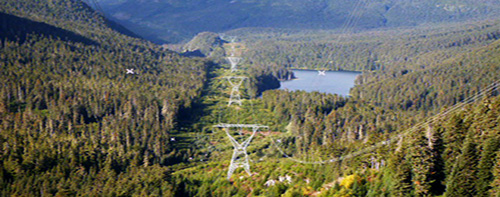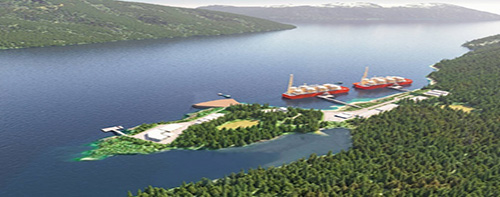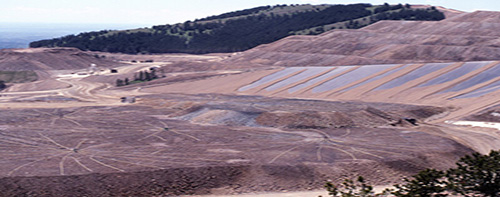Major Projects Office: Second tranche of projects under consideration
Backgrounder
The Major Projects Office (MPO) was created to accelerate the development and delivery of nation-building projects, driving Canada’s economic growth and strengthening our future prosperity. Projects deemed to be of national importance and significance are referred to the MPO, which will work with proponents, provinces, territories and Indigenous Peoples to find the right way forward for these projects.
In September, Canada’s new government announced the first tranche of major projects – representing $60 billion in investments in nuclear power, LNG, critical minerals, and new trade corridors. We also outlined strategies – from Atlantic energy connecting wind and new transmission, to carbon capture to high-speed rail and a sovereign cloud – to drive tens of billions in further investments, while creating the conditions for a better connected, more productive, and ambitious country.
Today, Prime Minister Mark Carney announced the second tranche of projects to build our economy. On their own, any one of these projects is transformational. As part of our broader national strategies to boost Canada’s competitiveness, these initiatives will make our country more prosperous and resilient for generations to come. These strategies include:
- Realising Canada’s full potential as an energy superpower;
- Creating new trade and economic corridors to diversify our economy;
- Building our leadership in critical minerals to increase our independence; and
- Establishing our data sovereignty at a scale to serve Canadians safely and securely.
The projects announced today capitalise on these strengths. They will represent more than $56 billion in new investment, support 68,000 good-paying careers, and build Canada’s economic strength for generations.
Projects of national significance for further consideration
North Coast Transmission Line (NCTL)

Proponent
- B.C. Hydro
Project description
This project will tie the Northwest Critical Conservation Corridor together, delivering low-cost, clean electricity to local communities along the West Coast. The project would twin with existing transmission lines from Prince George to Terrace, and north up to Bob Quinn substation. By twinning major transmission lines, the NCTL will enable transformative new industrial projects – including the Ksi Lisims LNG facility and critical minerals developments in the Golden Triangle. The added benefit of NCTL would be bolstering telecommunications and electricity access for remote communities in northwestern B.C. while enabling clean growth for critical minerals and export-oriented LNG projects.
According to estimates from B.C., once operational, this project will create thousands of direct full-time careers, generate millions in annual public revenues, and anchor a clean-energy industrial corridor for generations to come. Additionally, it will help to prevent two to three million tonnes of carbon emissions annually, supporting Canada’s climate goals while powering economic growth.
Linked to this vision, the Yukon–B.C. Grid Connect Project will extend the benefits even further north – connecting the Yukon’s isolated electrical grid to the Canadian grid through B.C., increasing the Yukon’s energy security and providing clean power to communities in Canada’s Northwest corridor.
Ksi Lisims LNG

Proponent
- Western LNG
- Nisg̱a’a Nation
- Rockies LNG Partners
Project description
Ksi Lisims, a proposed floating natural gas liquefaction and export facility located on the north coast of British Columbia, within the modern treaty territory of the Nisg̱a’a Nation, is being referred to the Major Projects Office. The Project is a partnership between the Nisg̱a’a Nation, Western LNG, and Rockies LNG. Designed to be one of the world’s lowest-emission LNG facilities, Ksi Lisims LNG aims to foster sustainable economic development and lasting prosperity in Canada’s northwest.
Ksi Lisims LNG will become Canada’s second-largest LNG facility and one of the world’s lowest-emission LNG operations once fully electrified, with emissions 94% below the global average. The project is expected to attract nearly $30 billion in investment, create thousands of skilled careers, and strengthen Canada’s position as a global LNG exporter.
On September 15, 2025, the LNG Facility received federal and provincial environmental assessment approvals, in line with the goal of achieving “one-project, one-review.” The project referral also includes the 800-kilometre Prince Rupert Gas Transmission Project to supply feed gas for liquefaction, and a 95-kilometre electrical transmission line to supply electricity to the facility. Ksi Lisims LNG proposes to construct and operate up to two floating liquid natural gas structures which together would export up to 22.4 billion cubic metres per year of natural gas.
Northcliff Resources’ Sisson Mine

Proponent
- Northcliff Resources Ltd.
Project description
Tungsten has both civilian and defence applications, such as cutting tools, steel, military munitions, and protective equipment. Global tungsten markets are highly concentrated, and this project has the potential to make Canada a secure supplier for domestic and allied industries.
Canada’s last tungsten mine closed in 2015, and Sisson would revitalise Canada’s production of tungsten, as well as produce molybdenum, which makes steel and superalloys stronger, harder, and more corrosion resistant.
Canada Nickel’s Crawford Project

Proponent
- Canada Nickel Company
Project description
This project will serve as an anchor of Canada’s global leadership in clean industrial materials. Located in the world’s second-largest nickel reserve, the Crawford Project will produce high-quality, low-carbon nickel essential for batteries and green steel.
This site has the second-largest nickel reserve in the world and is expected to operate for over 40 years. The project’s carbon emissions are estimated to be nearly 90% lower than the global average and the project has the potential to have a net-negative carbon footprint, representing a model for the future of responsible mining. The project will attract $5 billion in investment and create thousands of good-paying careers, securing Canada’s place at the forefront of the clean economy.
Agreements are signed with the Mattagami, Matachewan, and Flying Post First Nations for early business and employment opportunities which includes commitments for negotiations on contracting opportunities. Also, Taykwa Tagamou Nation has partnered with Canada Nickel to invest $20 million in the Crawford Project. This investment is in the form of convertible notes, which, if exercised, will give Taykwa Tagamou Nation a meaningful equity stake in the project.
Canada Nickel is also proposing, through its NetZero Metals wholly-owned subsidiary, to develop a nickel refinery for the stainless steel and electric vehicle markets, and a stainless steel and alloy production facility.
The Iqaluit Nukkiksautiit Hydro Project

Proponent
- Nunavut Nukkiksautiit Corporation
Project description
The Iqaluit Nukkiksautiit Hydro Project (ᐃᖃᓗᐃᑦᓄᑭᒃᓴᐅᑏᑦᓴᓇᔭᐅᔪᖅ) a 15-30 megawatt conventional hydroelectric facility located on the Kuugaluk river, 60 kilometres outside of Iqaluit, Nunavut. This project is led by Nunavut Nukkiksautiit Corporation, Nunavut’s first 100% Inuit-owned renewable energy developer. The Iqaluit Nukkiksautiit Hydro Project would displace the City of Iqaluit’s current use of diesel-generated electricity with affordable, reliable and emissions-free power.
Iqaluit currently relies on imported diesel fuel for electricity generation, equivalent to 15 million litres annually, producing an estimated 130,000 tonnes of greenhouse gas emissions annually. The project will help to stabilize Iqaluit electricity rates that have increased more than 22% in the last five years. The Project supports Indigenous-led energy transition, economic reconciliation, advances Inuit self-determination, and supports Inuit-led priorities. Regular engagement with Rights-holders and impacted groups continues to occur at every project decision.
Nouveau Monde Graphite’s Matawinie Mine

Proponent
- Nouveau Monde Graphite
Project description
Nouveau Monde Graphite is developing an open pit graphite mine that will be integrated with a planned Battery Material Plant to produce spherical graphite for batteries and other advanced manufacturing applications. Operations will bolster the emerging battery hub in Bécancour, Québec, while potentially unlocking future graphite opportunities across Canada. It will create over one thousand new careers, and draw $1.8 billion in investment.
Graphite is an essential component of defence applications and electric vehicle and energy storage system batteries, and a key material for decarbonising the transportation sector. The project, powered by Québec's affordable clean hydropower, will also help diversify global graphite supplies away from carbon-intensive supply chains. Nouveau Monde also plans to eventually transition to a zero-emission fleet at the mine site.
This builds on investments – including more than $35 million from the Canada Growth Fund, a letter of interest from the Canada Infrastructure Bank and a letter of interest for up to US$430 million from Export Development Canada – and additional contributions from Japanese companies Panasonic Energy and Mitsui & Co., to support the company in its journey to create the largest fully-integrated natural graphite process from mining to industrial use products.
Transformative strategy
The Northwest Critical Conservation Corridor
Current announced projects referred to MPO linked to this strategy: Red Chris Mine Expansion, North Coast Transmission Line, Ksi Lisims LNG
Project description
Canada’s northwestern coast is home to the Golden Triangle - one of the world’s richest reserves of the minerals and metals that are essential for the energy transition as well as defence supply chains for Canada and our allies. It is also one of Canada’s gateways to global markets through the Pacific Ocean, and home to vibrant communities in a spectacular environment rich with mountains, glaciers, watersheds and coastal ecosystems.
The Northwest Critical Conservation Corridor: Northwest British Columbia and the Yukon also includes a number of major projects including enabling infrastructure like the North Coast Transmission Line, and resource development like Ksi Lisims LNG (also referred to the MPO today). Working with stakeholders and Rights‑holders towards our shared goals is an important part of this approach unlocking Canada’s economic potential, for the benefit of Canadians.
To finalise investment decisions on all key pieces of infrastructure and conservation areas that support the accelerated development of the Golden Triangle area, this initiative has been referred to the Major Projects Office to set up a coordinated plan for the region. Under the banner of “The Northwest Critical Conservation Corridor: Northwest British Columbia and the Yukon”, the investments needed will be evaluated and accelerated to ensure the potential of the region is achieved.
Once realized, this Corridor will enhance Canada’s climate competitiveness, fundamentally transform the lives of thousands of Canadians, position Canada as a global leader in critical minerals, and drive prosperity across the country.
Visit the MPO website for more information, including progress updates on the initial projects and transformative strategies, and explore these initiatives on an interactive map.